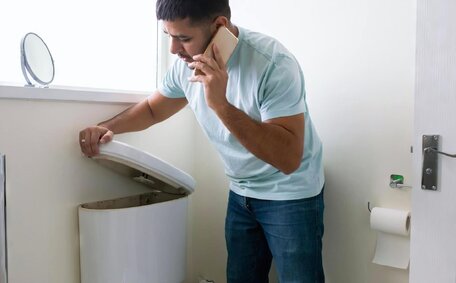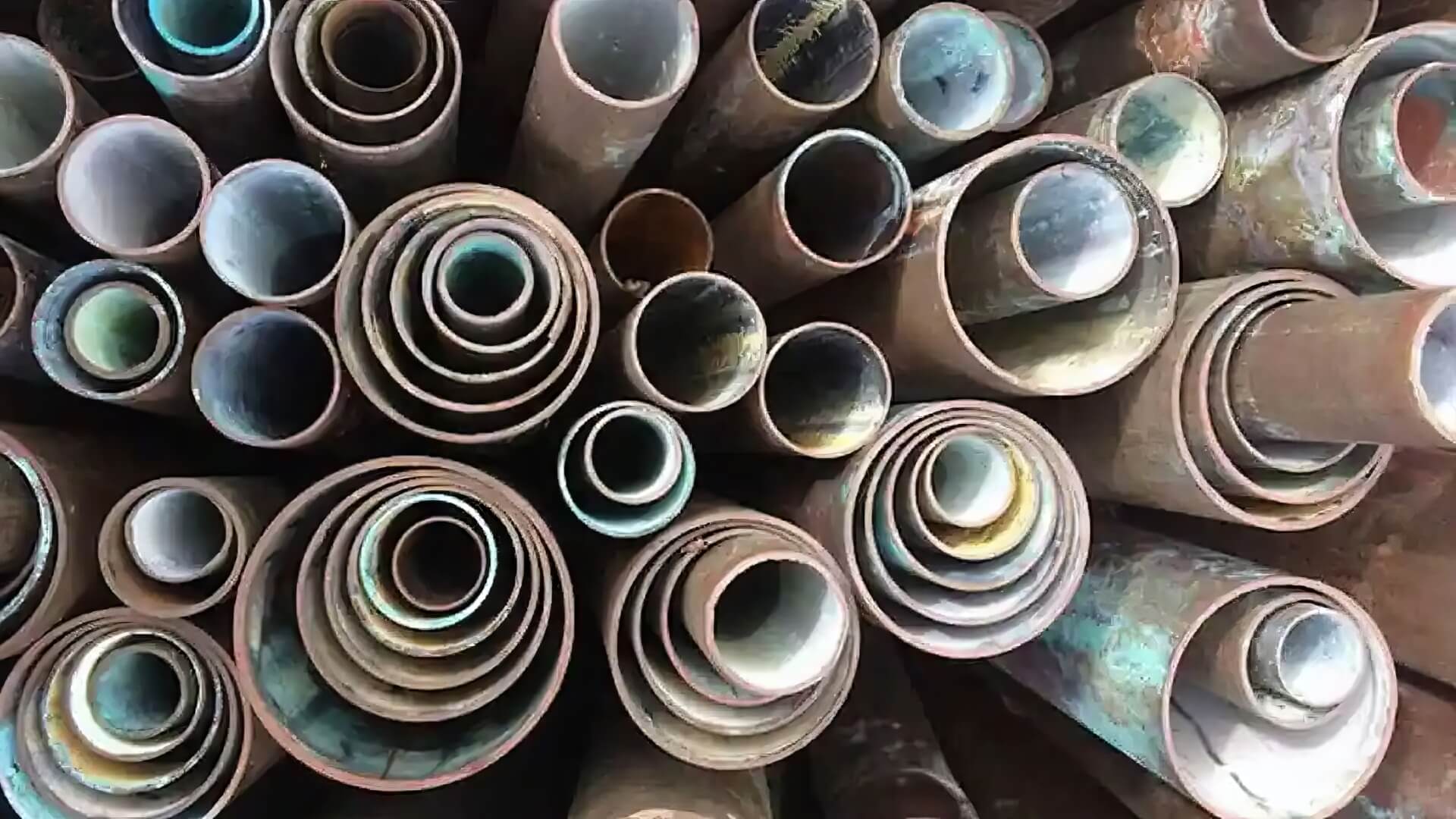
10 Signs Your Hot Water Heater Will Fail
If your water heater is old, leaking, rusty, noisy, not heating water properly or has low pressure, it could fail soon. Get your hot water system inspected today.
Read MoreTrenchless pipe repair has become an increasingly popular alternative to traditional pipe replacement methods that involve extensive digging and disruption. The two primary methods for repairing damaged pipes without excavation are pipe patching and pipe relining.
Pipe patching seals holes, cracks, or leaks in pipes using specialised materials, offering an alternative to full replacement. Small sections of pipe can be repaired this way without having to replace the entire pipe. Pipe relining creates a new pipe inside the old one by applying an epoxy resin inside the existing pipe, which seals damage and enhances structural strength.
These trenchless repair methods negate the need for disruptive trench digging and concrete removal. This makes them faster, more convenient and less invasive than digging up pipes. In this article, we’ll take a detailed look at pipe patching and pipe relining vs traditional methods, including their applications, advantages, disadvantages and costs.
Pipe patching is a targeted trenchless repair method used to fix isolated sections of a method pipe without having them dug up. This creates a permanent seal and reinforcement for small damaged areas, without having to replace entire pipe sections.
Our applied method involves fitting an epoxy resin patch or a tailor-made liner directly at the leak, crack, or hole in the pipe.
Pipe patching is most efficient and cost-effective for localised damage. Typical scenarios where pipe patching is recommended include:
Pipe patching’s major advantage is rapid repair with minimal surface disturbance. Access is only required at a small excavation point over the damaged section. This technique avoids the extensive digging and replacement work characteristic of conventional repairs, preserving the remainder of the pipe.
Pipe patching is the go-to method to get the job done efficiently when pipe damage is minor and concentrated in one area. Signs that indicate pipe patching may be the best repair approach include:
Plumbers can specifically target and seal the damaged pipe section with pipe patching. Pipe patching is a more targeted and cost-efficient solution than relining, which treats the entire pipe interior.
Patching minimises disruption since it requires only a small access point to the damaged section. It is particularly well-suited for early-stage repair of leaks or corrosion damage before they impact larger pipe areas.
Pipe patching involves a few key steps to repair damaged sections of pipe:
Pipe patching is often completed in one day with minimal disruption to the property. The repaired section is structurally strengthened and leak-proofed. Pipe patching provides a fast, effective fix for isolated pipe damage without having to replace entire pipe runs.
Pipe relining is a no-dig repair technique, involving the internal application of a seamless epoxy resin to repair the existing damaged pipe. This essentially creates a new pipe within the old pipe.
The process pipe relining employs begins by using a remote camera to inspect and measure the interior of the damaged pipe. A flexible resin-saturated liner is then threaded through the pipe and expanded using heat or air pressure. As it hardens, the liner adheres to the old pipe, providing a smooth, jointless and corrosion-resistant new interior.
Pipe relining is often preferred over replacement for pipes where access or conventional replacement is challenging. It can restore structural integrity and stop leaks without having to dig trenches or break up walls, floors or driveways.
Key benefits of pipe relining include the fact that the pipe been structurally reinforced:
Pipe relining is favoured over replacement for issues like widespread cracking, severe root intrusions, or collapsed areas. It provides full-length structural renewal when patching isolated areas is insufficient.
Pipe relining is recommended when there are widespread plumbing issues throughout an entire pipe system. Some signs indicating that relining may be needed include:
Unlike patching which targets isolated damage, relining provides structural renewal to the full length of pipes. It is the preferred solution when problems exist in inaccessible pipes that run under walls, floors or foundations. Relining restores function and prevents further damage with minimal property impact.
Other situations where relining is recommended over patching include:
Pipe relining is ideal for comprehensive restoration of extensive pipe damage, inaccessible pipes, or proactive renewal of old piping systems. It is a long-lasting solution when patching isolated areas is not enough.
The outcome is a smooth, seamless, leak-proof pipe with improved sewage flow. With minimal excavation, pipe relining restores structural integrity and decreases property disruption, offering a lasting solution for extensive damage.
When it comes to repairing damaged pipes, both pipe patching and pipe relining offer trenchless solutions without the need for major digging. However, there are some key differences between the two methods:
In summary, pipe patching provides a quick, cost-effective repair for minor, localised leaks or holes. Pipe relining is recommended when the entire piping system requires structural rehabilitation and renewal to stop widespread issues.
The best approach depends on the extent of damage, location, pipe accessibility, and desired long-term results. If you consult with our team, they can assist in determining whether patching or relining is the fitting trenchless repair method for your situation.
When comparing the costs of pipe patching versus pipe relining, there are a few key factors to consider:
While Pipe relining, while having a higher initial investment, offers full rehabilitation for your severely damaged plumbing system. For minor leaks or holes, patching provides a budget repair. Consulting an expert plumber can determine the best cost-effective solution.
In terms of repair durability, relining generally surpasses patching:
It’s common for professional pipe relining services to provide long-term warranties, sometimes extending to 10 years. Pipe patching may only have guarantees lasting 1-2 years.
For long-lasting and durable repairs, sewer pipe relining is the gold standard. While patching offers a temporary fix, relining outmatches the lifespan than new pipes, providing superior resistance against cracks, corrosion, and root intrusions over decades of use.
In terms of repair durability, relining generally surpasses patching:
It’s common for professional pipe relining services to provide long-term warranties, sometimes extending to 10 years. Pipe patching may only have guarantees lasting 1-2 yes them more environmentally friendly and less damaging to property compared to traditional pipe replacement.
Digging trenches to access and replace pipes can disrupt your garden, driveways, and other landscaping. It also requires breaking up concrete floors or walls in some cases. Trenchless repairs only require accessing the pipe through small access points, limiting destruction to property.
Furthermore, both relining and patching produce less waste compared to complete pipe replacements. The old pipe remains underground, so there is no debris to haul away and dispose of in landfills.
In terms of environmental impact, trenchless methods avoid the carbon emissions of major excavation equipment. The repairs are completed faster, so noise and disruption to surrounding homes is minimised.
For both environmental and property preservation reasons, pipe patching and relining are the preferred trenchless repair techniques when pipe replacement is not absolutely necessary.
To ensure the longevity of your pipe relining project and other repairs, there are some maintenance steps that should be followed:
Following the manufacturers care guidelines can also help preserve repairs. With proper maintenance, pipe patching and relining can both continue providing many years of leak-free performance.
Prompt contact with your plumber ensures any repair method remains durable over time.
When it comes to repairing damaged pipes, determining the right solution - patching versus full relining - depends on assessing the location, extent and cause of damage. However, for recurring leaks along large sections or issues like root damage spread throughout the system, pipe relining may be the better option for long-term results.
For minor leaks or holes limited to one area, pipe patching provides a fast and affordable fix.
Consulting with a professional, licenced plumber is highly recommended to evaluate your specific needs and recommend the optimal repair method. Factors like pipe accessibility, material type, and budget constraints also help dictate the best approach.
With the right solution tailored to the unique circumstances of your plumbing issue, you can get your pipes fixed correctly the first time, avoiding repeated repairs down the road.
If you’re dealing with plumbing issues, our expert team stands ready to inspect and advise whether patching or relining is best suited to your home or business, ensuring efficient restoration with minimal impact.
When it comes to repairing damaged pipes, determining the right solution - patching versus full relining - depends on assessing the location, extent and cause of damage.
For m approach.
If your water heater is old, leaking, rusty, noisy, not heating water properly or has low pressure, it could fail soon. Get your hot water system inspected today.
Read MoreIf you have plumbing fixtures that are over 10 years old or showing signs of wear like leaks and cracks, it’s important to replace them to prevent more costly water damage in the future. Replacing worn fixtures improves water efficiency.
Read MorePipe relining is a trenchless method that renews pipes from the inside out. It involves draining, drying and scrubbing the pipe interiors before applying materials like silicone, PMMA or epoxy resins to create a resilient, soft, temporary liner inside the existing pipes.
Read MoreMortdale, 2223 NSW
We will call back as soon as possible.




